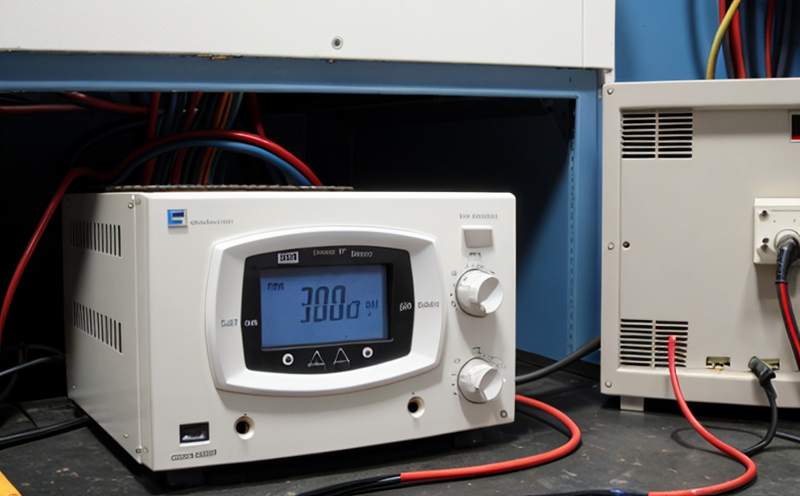EN 50130 EMC Testing of Lighting Systems for Alarm Applications
The European standard EN 50130 is specifically designed to ensure that lighting systems used in alarm applications meet stringent Electromagnetic Compatibility (EMC) requirements. This testing protocol aims to protect these critical systems from electromagnetic interference, ensuring their reliability and functionality in challenging environments.
Alarm systems are pivotal components in various sectors including healthcare, transportation, security, and emergency services. Any disruption or failure can lead to severe consequences. For instance, in a hospital setting, a lighting system failure during an emergency situation could jeopardize patient safety. Therefore, ensuring the EMC compliance of these systems is paramount.
EN 50130 defines specific test procedures that evaluate how well a lighting system functions within its electromagnetic environment without causing harmful interference to other devices or being adversely affected by them. The standard covers both conducted and radiated emissions as well as immunity tests, which are crucial for assessing the robustness of the lighting systems.
During testing, the lighting system is subjected to controlled electromagnetic environments that mimic real-world conditions. This includes exposure to various levels of electromagnetic interference (EMI) over a wide frequency range. The goal is to determine whether the system can operate correctly in these conditions and not interfere with other devices operating nearby.
The test setup typically involves specialized equipment designed to generate controlled levels of EMI, such as an anechoic chamber, which minimizes external reflections of electromagnetic waves. This ensures accurate measurement of both emissions from the lighting system and its immunity to interference. The testing process also includes detailed documentation of all parameters tested and their results.
Understanding the importance of EN 50130 in alarm applications is crucial for quality managers, compliance officers, R&D engineers, and procurement professionals involved in developing or sourcing these systems. Compliance with this standard not only ensures product reliability but also helps companies avoid costly recalls and potential legal issues.
In summary, EN 50130 EMC testing plays a vital role in safeguarding the integrity of lighting systems used in alarm applications. By adhering to this standard, manufacturers can ensure their products meet stringent EMC requirements, thereby enhancing overall system reliability and safety.
Why It Matters
The importance of EN 50130 EMC testing in alarm applications cannot be overstated. Compliance with this standard ensures that lighting systems are robust enough to function reliably even under harsh electromagnetic conditions. This is particularly critical for devices used in life-critical or high-stress environments.
For instance, in a healthcare setting, a failure of the emergency lighting system during an evacuation could lead to significant delays and potential risks to patients. Similarly, in transportation systems, any disruption can cause operational inefficiencies and safety hazards. By ensuring EMC compliance through rigorous testing according to EN 50130, manufacturers can mitigate these risks.
The standard also helps reduce the likelihood of interference between different devices operating in close proximity. This is especially important in densely populated areas where multiple electronic systems are in use simultaneously. Ensuring that lighting systems do not emit excessive emissions or suffer from insufficient immunity to interference contributes to a more harmonious electromagnetic environment.
Furthermore, compliance with EN 50130 can enhance the reputation of manufacturers and their products. Meeting international standards like this one demonstrates commitment to quality and safety, which is highly valued by customers and industry stakeholders alike. It also facilitates easier entry into markets where these standards are required or recommended.
In conclusion, ensuring EMC compliance through EN 50130 testing is essential for maintaining system reliability, enhancing safety, reducing interference risks, and fostering trust in the products used across various critical applications.
Applied Standards
| Standard Name | Description |
|---|---|
| EN 50130-1 | Particulars of electrical characteristics and test procedures for lighting systems used in alarm applications. |
| EN 50130-2 | Determination of immunity to conducted disturbances. |
| EN 50130-4 | Determination of immunity to radiated disturbances. |
| EN 50130-6 | Evaluation of the susceptibility of lighting systems to electromagnetic interference. |
Scope and Methodology
The scope of EN 50130 EMC testing for lighting systems in alarm applications encompasses a comprehensive evaluation of the system's electromagnetic behavior. The primary objective is to ensure that the lighting system can function correctly without causing or being affected by electromagnetic interference.
The methodology involves several key steps. First, detailed specifications and requirements are established based on the intended use of the lighting system in alarm applications. This includes defining the expected environmental conditions under which the system will operate.
Next, the test setup is configured according to the specific requirements outlined in EN 50130. This typically involves setting up an anechoic chamber or similar facility where controlled levels of electromagnetic interference can be generated and measured accurately. The lighting system is then subjected to these conditions over a wide frequency range.
The testing process includes both emission tests and immunity tests. Emission tests measure the level of electromagnetic emissions from the lighting system, ensuring they do not exceed permissible limits set by the standard. Immunity tests assess how well the system can withstand specified levels of interference without failing or causing unwanted effects.
Throughout the testing process, meticulous documentation is maintained to record all parameters tested and their results. This includes detailed notes on the test setup, conditions, and any observed behavior during testing. Post-test analysis is conducted to interpret these results comprehensively.
The findings from the EN 50130 EMC testing are then used to refine the design of the lighting system if necessary, ensuring continuous improvement in its electromagnetic compatibility. Compliance with this standard not only ensures product reliability but also helps manufacturers meet regulatory requirements and gain market acceptance.





